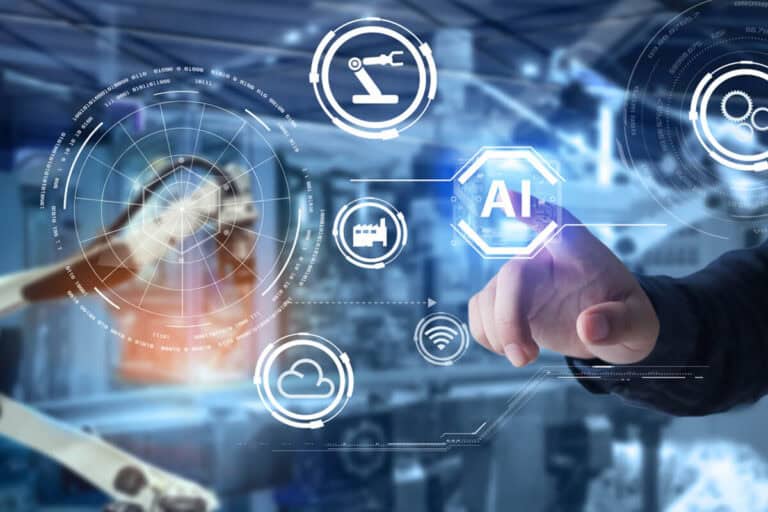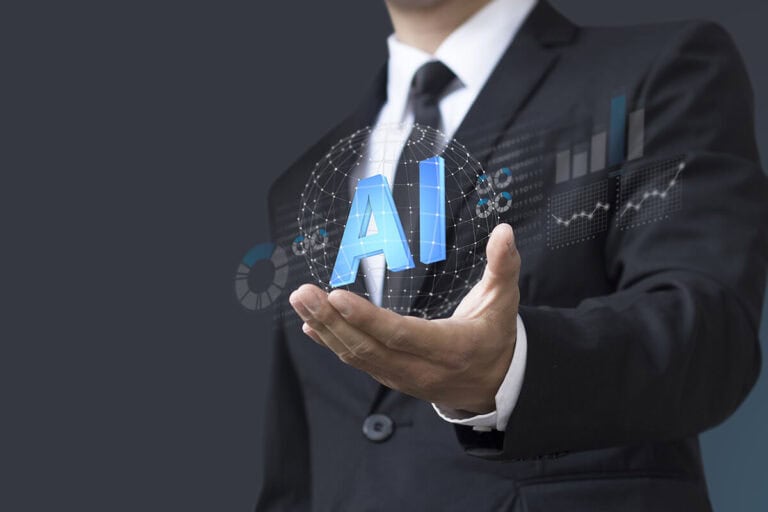Deep learning (DL) is a data science term that has become a hot buzzword in tech, business and marketing. Along with artificial intelligence (AI) and machine learning (ML), deep learning is a technology that is now coming into its own, and together, all three are poised to begin ushering in massive changes to practically every industry on the planet.
Table of Contents
ToggleSounds like a pretty big deal, right? It is – so let’s try and get our heads around what deep learning is, does, and aims to achieve. To do so, we need to understand the differences between AI, ML and DL.
AI vs ML vs DL
Artificial intelligence. Machine learning. Deep learning.
While the three terms are often used interchangeably, they shouldn’t be, for they are not the same thing. ML and DL in particular are most frequently confused – and it’s easy to understand why.
Machine learning is in fact a subset of AI – and deep learning is a subset of machine learning. To put it another way, deep learning is a branch of machine learning. It is an advanced technique of teaching algorithms to make independent decisions – and both are part of the broader field known as artificial intelligence.
So there’s the first key difference to understand. But let’s break down the terms individually.
Artificial Intelligence
AI involves building machines that can perform tasks characteristic of human intelligence. It is in fact a rather general term – much broader than the concepts of machine learning and deep learning – and includes things like planning, problem-solving, understanding languages, and recognizing voices and images.
There are two types of artificial intelligence, known as Narrow AI and General AI. Narrow AI focusses on building machines to complete one predefined (i.e. narrow) task. The idea is that the machine will be able to complete this task – say, recognizing objects in images, recommending a playlist on Spotify, or even drive a car – extremely well, though not much else.

(Image source: neurogadget.com)
General AI, on the other hand, is something altogether more sophisticated – and is in fact something of a Holy Grail for computer science. It refers to a system which would be able to cope with any generalized task that might be asked of it – much like a human. The idea is that General AI would possess real, human-like cognitive abilities, and have a general and experiential understanding of its environment – coupled with the ability to process all this data much faster than us mere mortals could even imagine. Needless to say, General AI is still a few years (decades) away yet.
Machine Learning
While artificial intelligence is something of a broad term, machine learning is more defined, referring specifically to a subset of AI algorithms.
As its name suggests, machine learning is about building machines with the ability to learn from data and progressively improve performance on a specific task. As such, ML can be thought of as a way of achieving artificial intelligence.
Machine learning enables an algorithm to evolve. “Learning” in this case means feeding an algorithm with a massive amount of data so that it can adjust itself and continually improve without the need of human intervention.
For example, machine learning has been used to improve computer vision – i.e. recognize objects in an image or video. It works by gathering hundreds or even thousands (or millions) of photographs of an object and feeding them into the computer. Let’s say you were trying to teach the computer what a frog looks like. Half of the images show frogs; the other half show other animals. 50% of the images are tagged by humans. These tags will say either “frog” or “not a frog”. The remaining 50% do not have tags.
The ML algorithm will study the tagged images, and, after a time, it will build a model of a frog, which can then be used to classify the remaining images without tags. Once the accuracy level is high enough, the machine can be said to have “learned” what a frog looks like.
Deep Learning
Deep learning (also known as deep structure learning, hierarchical learning or deep machine learning) is one of the many branches of machine learning, and in fact takes ML to an entirely new level.
Deep learning is a set of algorithms that aim to build a hierarchical representation of data. In the case of DL, “hierarchical” means that the algorithms work in “layers” of functions built upon one another. In this way, they learn step by step how to make accurate decisions – i.e. first recognize the shape of an object, then its color, texture, etc. Unlike shallow ML methods, DL uses this layered structure of algorithms – known as an artificial neural network (ANN) – to continually analyze data with a logic similar to how a human would draw conclusions. Ultimately, deep learning neural networks can learn on their own which features are important to, say, correctly identify a frog, whereas shallow machine learning relies on human input – such as “frog” and “not a frog” tags – to learn.

(Image source: geospatialworld.net)
To put it even more simply, machine learning uses algorithms to parse data, learn from that data, and then make informed decisions based on what it has learned. Deep learning, on the other hand, structures algorithms in layers to create an ANN that can learn and make intelligent decisions on its own. While simple, task-specific ML algorithms need to be told what “to look for”, DL algorithms figure it out by themselves, creating entirely new ways to solve problems.
Many consider deep learning to be the most exciting approach to machine learning precisely because it relies on ANNs – just like the human brain. In fact, engineers are trying to imitate the biological nervous system when developing machines with deep learning capabilities.
Deep Learning in Practice
Over the past few years, deep learning has become more and more common. It can be found powering some of the world’s most powerful tech today, and has all sorts of implications for businesses.
For example, aside from image classification, which social networks like Facebook and Instagram are using all the time, deep learning neural networks are used by platforms like LinkedIn to detect spam or abusive comments. “We use neural nets to help understand all kinds of content shared on LinkedIn – ranging from news articles to jobs to online classes –so we can build better recommendation and search products for members and customers,” said LinkedIn’s Vice President of Artificial Intelligence Deepak Agarwal.
In marketing, DilogTech uses neural networks to classify inbound calls, give them a lead score, and segment them into predetermined categories. Tim Hoolihan, Senior Director of Data Science and Analytics at DilogTech, explains that the network performs these actions based on call transcriptions and the marketing channel or keyword that drove the call. “For example, a caller who is speaking with a dental office may ask to ‘schedule an appointment.’ The neural network will seek, find and classify that phrase as a conversation, therefore providing marketers with valuable insights into the performance of marketing initiatives.”
And from content recommendation on platforms like Netflix to language translation and self-driving cars, deep learning is being used everywhere – and still it’s nowhere near reaching its full potential. In the future, we can expect deep learning to be used in healthcare to improve diagnosis accuracy, create gene-tailored medicines, and detect cancer. In consumer industries, demand trends will be predicted on a hyper-regional basis, reducing waste and optimizing targeting. In supply chains and manufacturing, predictive maintenance of equipment, yield optimization, procurement analytics and inventory optimization all stand to be improved far beyond anything that was achievable just a couple of short years ago – and many improvements are already being realized today.
Deep learning and artificial neural networks may be hard to get your head around, but it is a huge field of data science that will impact your industry more and more as each year ticks by. How will your business benefit?
Summary:
What is Deep Learning?
Deep learning (DL) is a data science term that has become a hot buzzword in tech, business and marketing. Along with artificial intelligence (AI) and machine learning (ML), deep learning is a technology that is now coming into its own, and together, all three are poised to begin ushering in massive changes to practically every industry on the planet. Machine learning is in fact a subset of AI – and deep learning is a subset of machine learning. To put it another way, deep learning is a branch of machine learning. It is an advanced technique of teaching algorithms to make independent decisions – and both are part of the broader field known as artificial intelligence. AI involves building machines that can perform tasks characteristic of human intelligence. It is in fact a rather general term – much broader than the concepts of machine learning and deep learning – and includes things like planning, problem-solving, understanding languages, and recognizing voices and images. While artificial intelligence is something of a broad term, machine learning is more defined, referring specifically to a subset of AI algorithms. As its name suggests, machine learning is about building machines with the ability to learn from data and progressively improve performance on a specific task. As such, ML can be thought of as a way of achieving artificial intelligence. Deep learning (also known as deep structure learning, hierarchical learning or deep machine learning) is one of the many branches of machine learning, and in fact takes ML to an entirely new level.Deep learning is a set of algorithms that aim to build a hierarchical representation of data. In the case of DL, “hierarchical” means that the algorithms work in “layers” of functions built upon one another. In this way, they learn step by step how to make accurate decisions – i.e. first recognize the shape of an object, then its color, texture, etc. Unlike shallow ML methods, DL uses this layered structure of algorithms – known as an artificial neural network (ANN) – to continually analyze data with a logic similar to how a human would draw conclusions. Ultimately, deep learning neural networks can learn on their own which features are important to, say, correctly identify a frog, whereas shallow machine learning relies on human input – such as “frog” and “not a frog” tags – to learn.




